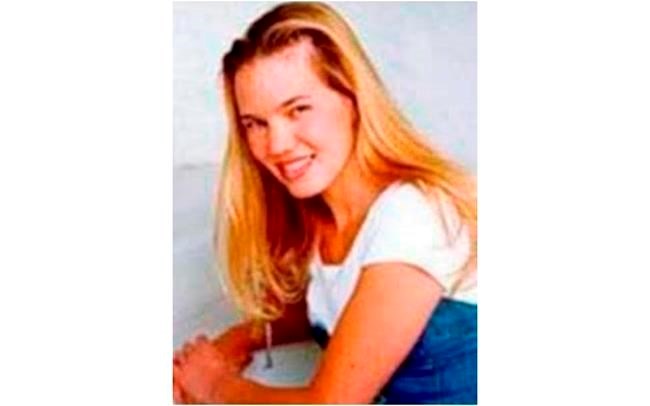LOS ANGELES — The suspect in the 1996 disappearance of California college student Kristin Smart killed her while trying rape her in his dorm room and his father helped hide the body, the San Luis Obispo County district attorney said Wednesday.
District Attorney Dan Dow said prosecutors would seek to prove Paul Flores tried to sexually assault Smart by showing prior sex acts he engaged in and crimes they believe he committed in more recent years.
Prosecutors filed a first-degree murder charge against Paul Flores, 44, and an accessory after murder charge against his father, Ruben Flores, 80, for helping him conceal Smart’s body, which has never been found.
The two were arrested Tuesday after years of investigation and a search last month using ground-penetrating radar and cadaver dogs at the elder Flores' home that led to evidence connected to Smart’s death, authorities said. They didn't revealed what was found.
Smart, 19, of Stockton, was last seen May 25, 1996, with Flores while returning to her dorm at California Polytechnic State University campus in San Luis Obispo after an off-campus party. She was inebriated at the time, and Flores, a fellow freshman, had offered to walk her home.
Dow revealed that investigators think Flores killed Smart in his dorm room during the Memorial Day weekend when many students had left the campus.
Investigators, who launched a renewed search Tuesday at his father’s property in nearby Arroyo Grande, believe they know where the body was buried but have not yet found it or disclosed the location.
Paul and Ruben Flores are in jail and scheduled to be arraigned Thursday in San Luis Obispo Superior Court.
A lawyer for Paul Flores declined to comment on the arrest or charges. Harold Mesick, a lawyer for Ruben Flores, told the Los Angeles Times his client is “absolutely innocent.”
Paul Flores has remained mum through the years, invoking his Fifth Amendment right to not answer questions before a grand jury and in a deposition for the lawsuit brought against him.
Susan Flores, the mother of Paul and estranged wife of Ruben, broke years of public silence last month in an interview with KSBY-TV in which she said her family had no role in the death and her son had been a scapegoat.
“They keep trying to find the answers with us and they keep failing because the answers are not here,” she said. “We have no responsibility for her disappearance and what happened to that young woman.”
Susan Flores hung up the phone when contacted by The Associated Press on Tuesday.
The criminal charges include a disclosure that prosecutors intend to admit evidence of prior sexual acts by Paul Flores.
“These prior sexual acts include ... incidents described in the investigative reports and audio/video provided to
Dow said investigators have evidence Paul Flores continued to prey on women after Smart's death and the prosecutor appealed to any victims to come forward.
Dow didn’t disclose what investigators found, but said Flores frequented bars around his home in the San Pedro area of Los Angeles area since 2005 and may have committed crimes there. He has a record of several convictions for driving under the influence.
“We have evidence that we do believe there were other people not yet identified that have had some kind of a criminal act perpetrated on them by Mr. Flores,” Dow said. “We’re concerned about sexual assault.”
Flores has been under suspicion from the earliest days of Smart's disappearance. He has gone from being a “person of interest” to a “suspect” to “the prime suspect” — and, now, defendant.
Sheriff Ian Parkinson acknowledged Tuesday that early missteps by law enforcement, including a slow response to reports of Smart's disappearance, hampered the investigation.
The revelation that the alleged crime scene was in Paul Flores' dorm room highlighted one of those failures.
Smart was reported missing May 28, 1996, but no search began until two days later. Flores' room wasn't searched for another two weeks — after he had moved out for the summer.
Smart’s family, who welcomed news of the arrest as a step toward bringing their daughter home, noted that “an indifference and lack of resolve we experienced early on set the course for many years.”
A renewed effort to investigate the case led to new witnesses coming forward and warrants that allowed investigators to intercept and monitor Paul Flores’ phone and text messages and search his own home, along with those of his mother, father and sister that turned up new evidence, Parkinson said. He declined to offer more details because search warrants are sealed.
Investigators served over 40 search warrants at 16 locations over the years, collected nearly 200 new items of evidence and used modern DNA techniques to test more than three dozen older pieces of evidence. So much evidence was compiled that it would fill three terabytes on a computer hard drive, he said.
Brian Melley, The Associated Press


